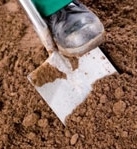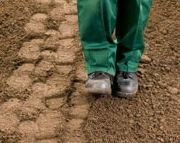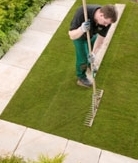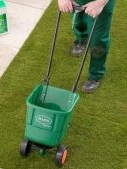How to Lay the Perfect Turf Lawn
 Laying turf is the quickest way to a garden lawn
Laying turf is the quickest way to a garden lawnLaying turf is the quickest way to getting a usable, quality lawn for your garden, but it does require planning to achieve the best results.
Those indisposed to planning and having an organised approach to things should avoid laying grass turf; you could end up with a patchy mess if you’re not careful!
The most important thing here is to be meticulous. A sharp and neat looking lawn can make you the envy of your neighbours and really improve the front aesthetic of your home, so make sure to vigilantly follow these steps toward a perfect turf lawn.
Your First Move – Getting Rid of Your Old Turf
This stage of the process has the potential to be extremely strenuous, but with some fore-thought, you can assure that this tiring but entirely necessary task remains manageable.
Rather than trying to assail your lawn with your trusty spade, attempting to excavate swathes at a time, a more considered approach will be much more fruitful.
You are aiming to cut a grid pattern into your lawn, with a view to methodically removing individual sections at a time. This should be achieved by firstly using a spade, or preferably a lawn edger, to slice the entire length of your lawn at 12 inch intervals (this is discretionary as some lawns may be larger and require larger widths). Then simply perform the same task to complete the grid pattern, scoring each perpendicular row 18 inches apart. You should now have pieces measuring 12 x 18 inches.
The next step is to remove these smaller sections.
Work along the outermost row, thrusting the spade beneath the turf so it’s ready to be removed. Make sure to complete this all the way along each row before lifting the pieces away one at a time to be disposed – in this way you can ensure that you save time and energy, whilst not overexerting your body.
Readying the Soil
 The technique for this again varies on the size of your lawn and texture of your soil.
The technique for this again varies on the size of your lawn and texture of your soil.
Especially clumpy or compacted soil and lawns which cover a larger area may merit the need to hire a rotavator for a morning. Furthermore, steer clear of days which are overly dry, wet, hot or indeed cold so that you can guarantee that the new grass turf will root well. Whether manually or with mechanic assistance, make sure to cultivate the soil to a depth of 4 - 6 inches.
 Next, begin raking through the soil to create a flat and uniform surface, removing any stones or other debris as you progress and breaking up those stubborn chunks of soil. Topsoil may be required to level areas where your natural soil quality may be poor or uneven.
Next, begin raking through the soil to create a flat and uniform surface, removing any stones or other debris as you progress and breaking up those stubborn chunks of soil. Topsoil may be required to level areas where your natural soil quality may be poor or uneven.
Stamping down soilNow use man power to tread down the soil, giving the lawn a solid and compact base from which it can grow. Doing this will also highlight any patches which require levelling with further top soil or more raking to smooth out any bumps.
Fertilising and Getting Ready to Lay
Give your grass turf a head start by spreading fertiliser on the lawn pre-laying. Evenly distribute the either granular or liquid (using a watering can) fertiliser over the entire area. These extra nutrients will encourage healthy development of the grass plant by promoting deep penetration of the roots.
Be prepared to lay your turf with the first 24 hours of its arrival. Also, it is important to store the newly delivered lawn in a shaded place, which is proximate to your lawn. Remember that the turf is a living organism and so if it’s an especially hot day, remove the plastic coating to allow it to breathe.
Almost There – Laying the Grass Turf
 If your lawn is bordered by either fences, gates or walls, make sure to work inwards from the corners, thereby avoiding possible logistic problems later (as initially you need to avoid walking on the fresh turf).
If your lawn is bordered by either fences, gates or walls, make sure to work inwards from the corners, thereby avoiding possible logistic problems later (as initially you need to avoid walking on the fresh turf).
Begin to roll out the turn in parallel straight lines. Offset each new row as when laying bricks or patio tiles. Tamp each roll down as you lay it, using the flat edge of your garden rake.
When you reach the border of each row, you will need to cut the end of the turf using your lawn edger again or possibly a sharp knife.
A good tip to avoid walking directly on top of the grass plant is to lay wooden planks or boards across the new lawn.
Once you have completed the laying of the lawn, proceed to compact the turf by walking over the entire surface with planks – carefully attending to the corners and making sure that the adjoining sections do not curl up and become uneven.
Aftercare
 Watering
Watering
Having completed the turfing of your garden, make sure to water regularly. Avoid doing so during the middle of the day, as strong sun at this time can scorch the turf.
Although a good quality lawn should be able to accommodate pedestrian usage within two days, if at all possible, avoid doing so for 2 weeks – giving the lawn time to settle and become properly rooted.
Feeding
Give your lawn a boost by adding fertiliser at 4 – 6 week intervals.
Mowing

Furthermore, before mowing your lawn for the first time, make sure to check whether the roots have grown down into the topsoil below – if so, you can get going.
A last tip is to ensure that the lawn mowers blades are set relatively high so as to avoid damaging the grass plant – ideally you should be cutting only a third of the length the first time. This can be gradually lowered over time and the turf strengthens in its new environment.
This article was is kindly written by Rolawn grass turf.
Filed under Lawn Care.
